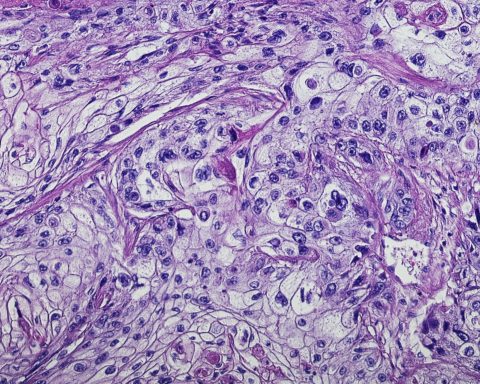 Murray Ellender is a GP in south London, a partner in The Hurley Group and co-founder of eConsult.
Murray Ellender is a GP in south London, a partner in The Hurley Group and co-founder of eConsult.
To mark the 100th anniversary of the invention of the telephone, the Lancet in 1977 published a discussion paper on the use of telephony in health care. The paper reminds us that the first words uttered by Alexander Graham Bell were for medical assistance as Bell, talking to Watson, had just spilt sulphuric acid (necessary to power the telephone battery) over himself and said “Mr Watson, come here, I want you” (Aronson, 1977). Notwithstanding that doctors were the first profession required to have a telephone to be available on-call, they were not universally in favour of this new-fangled technology.
Doctors of the day were concerned that patients would want the doctor to consult with them via the telephone instead of attending the surgery in person (meaning a reduction in fees); doctors were also worried that they would be inundated with calls. However, despite these reservations the technology took off, and very rapidly the telephone became an invaluable addition to the doctor’s armoury. Doctors were able to communicate with their patients (at least the very few who had access to a telephone), with each other – sharing information and gaining support across hospitals and with the authorities – and were able to provide early and quick warnings about new outbreaks of communicable diseases.
Fast forward 40 years and it’s not the telephone which is shaping medicine, but digital (electronic) consultations. Given how easily the public have embraced e-commerce and e-banking, many wonder why this has taken so long. Answering my own question – it’s because dealing with the complexity and sensitivity of health care is vastly more complicated than dealing with the purchase of a new shirt or booking a holiday. Health care has little room for error; it is a safety critical industry, and this is irrespective of the space (click, call or contact) in which it is delivered.
Empowering the patient to self-care is the achievable holy-grail of e-consultations
All e-consult systems must, as standard, be able to pick the rare abnormality or red flag symptom from the sea of normal (after all if they are to emulate GPs this is what we do all the time). Missing the subarachnoid haemorrhage in amongst all of the headaches is not an option, even if done by a computer using algorithms. Equally a system that just refers or diverts most contacts to a ‘safer’ alternative (such as 111, GP care, A&E care and so on) which is what many GPs are concerned about, is also not an option. E-consultations must divert not duplicate care if they are to find a place in our crowded consulting rooms. Empowering the patient to self-care is the achievable holy-grail of e-consultations, meaning that the busy GP can spend more time with those patients who really do need face to face care.
The digital space is blooming. There are many products being tested – and rightly so at the start of this exciting time. The platform developed by my own practice, eConsult, initially as an internal tool for use within The Hurley Group’s 15 practices, is now being used by more than 350 practices across England. Patient and GP feedback is helping continuously shape what is offered and we are constantly learning, adapting and improving what can be achieved. The journey to this date has involved developing clinical templates, algorithms, governance and competency frameworks for doctors using the system, ensuring indemnity is unaffected and improving the technological platform on which everything is based. We have learned how to launch in practice, how to embed in the myriad different models practices operate and how to best promote to patients and doctors. Now we are learning how to evaluate its potential.
Over 75% of eConsults are closed without the patient needing to attend the surgery
Of course, it is early days to show what has been achieved. Even given the quarter of a million e-consultations to date conducted by eConsult, this is but a fraction of the 1 million face-to-face appointments done by GPs across England every day. However, use is growing on a daily basis as GPs feel more confident to allow patients access to this technology. Our results are promising. Over 75% of eConsults are closed without the patient needing to attend the surgery. Of the remaining 25% who see a GP, appointments are more efficient as the patient’s history has already been taken – using the patient’s own words to describe what they feel is their problem. We have even managed to restore morale, with GPs enjoying the variety the e-consultations give, and the possibility of working together in our virtual practice; centrally processing eConsults across our 15 practices, enabling us to manage demand across a number of sites.
The telephone changed the clinical landscape 40 years ago, digital is redefining it once again. We are on the brink of a paradigm shift in how we consult with our patients – a shift which will enhance rather than reduce what we can offer patients. Just as the telephone, in the 20th century enriched all of our lives, so too will digital consultations in the 21st century. With continual improvement, it will never be time to ‘hang up’.
References
Aronson, SH. The Lancet on the telephone. 1876-1975 Medical History, 1977, 21: 69-87
Feature photo: Markus Spiske







5
Unfortunately Dr Ellender omitted to reference a peer reviewed study of eConsult in 36 practices, conducted by CAPC Bristol and published in this very journal, earlier this month. http://bjgp.org/content/early/2017/11/06/bjgp17X693509
The study concluded, “The experiences of the practices in this study demonstrate that the technology, in its current form, fell short of providing an effective platform for clinicians to consult with patients and did not justify their financial investment in the system. ”
The average number of eConsults submitted by patients was 0.9 per day per practice. While in the piece above Dr Ellender talks airily in percentages, the report said, “However, most e-consultations resulted in GPs needing to follow up with a telephone or face-to-face appointment because the e-consultation did not contain sufficient information to inform clinical decision making. This was perceived as adding to the workload and providing some patients with an alternative route into the appointment system. ”
For BJGP to publish this puff piece by a proprietor of the system evaluated thus, I find, shall we say, “surprising”.
DOI: I’m the chief executive of GP Access Ltd which offers askmyGP. Perhaps the BJGP would like to hear about a system which is giving greater efficiency to GPs and service to patients, with 30% of demand shifting online? But not from me, from one of our users who has no DOI.
Life in General Practice will always be busy and new technology or ways of working will not see that stop.
As a practice that thrives on change, explores new ways of working and and a desire to improve the patient experience we are open to innovation recognising that we need to be future ready.
Econsultations are part of a suite of options we can now offer our patients and I/we are converts, alongside other new technology such as video content etc.
I have informed and educated our patients about the services we now offer of which econsults are a key part of:
A video message was sent to all of our patients introducing the concept of online consultation:
All our lives are busy
That’s why food has become fast, communication like coffee is instant
and smart phones and tablets are our way of keeping up to date with the world.
The world is at our fingertips…
But not when we are ill…
When we are not feeling well everything seems to slow down.
The world comes to a stop.
Why do I have to queue at the doctors reception desk to make an appointment?
I don’t know I’m going to be unwell days ahead of needing an appointment..
When I ring the doctors it’s often engaged or I get that computer voice
telling me my call is important and I’m in the queue and won’t be forgotten.
When we need the doctor it can be so frustrating.
This is 2017 and we know you expect more…
You can now contact our doctors online while having that coffee from the comfort of your armchair
Whether it’s help for your condition, general advice or administrative help you will find it here; all without the need for logins or passwords and available 24/7.
We are now open even when we are closed.
Now whilst I am sure there are unique selling points between each of the various online consultation packages available and practices need to make their decision based on identifying their needs. The reality is that without us testing new ways of working we will remain rooted in historic processes. We still use Lloyd George notes.
The whole team has been involved in designing our econsultation pathway to the point we have a very efficient service that impacts lightly on the clinical team yet continues to grow beyond our expectations in terms of demand and benefits to our patients. As with clinical systems several companies will start to explore online consultations and the strongest will survive over time. I’m a convert and see a bright future. 80% of phone users now have smart phones lets challenge them to interact with us as they do with other online service providers….
I am a PM in a Practice that uses eConsult. We have been for just over 3 years.
Much of the study published (as per Harry’s reference above) resonates – it depends on the confidence of the clinician in using a different method of triage, it fits well with business strategy, it’s a great alternative for patients.
One of the points they make is the practices in the study were given the tool which makes them less invested in the process working – we initially paid for the tool ourselves (by not fully replacing a GP when they left), so we had more reason to make it work, so it was a key business priority.
Another point is that after 5 months (the minimum period it was in place before being interviewed), there is bound to be reticence to the change as you are still in the really painful part of the system where you are having to explain it to patients and persuade them to give it a go. You have to get past that initial “hump” to get to the point where patients are choosing to use it because it’s convenient to access, and get a timely and safe response. For us, that hump was probably after about 15-18 months – more and more patients are already aware of the tool and are using it without being directed to it.
It’s not completely clear from the study how the eConsults are being processed in the practices, and this certainly isn’t a one-size-fits-all solution, but we were clear we didn’t want it to add to the clinical workload. So the way we have implemented it is that a senior administrator does the initial processing of the report that comes through. This weeds out anything that is purely administrative, and also ensures that the clinician has all the information they need to deal with the patient’s problem (how many times has a patient presented to talk about what happened on their recent hospital admission, and you don’t yet have a copy of the discharge summary?). The administrator then performs a basic triage, using our protocol to decide whether the problem is more suitable for a telephone call or a face to face appointment, and whether it needs a GP or ANP. And all are booked by the end of the next working day, meaning we are keeping within the indemnity of the tool, and the report is not assessed twice by a clinician. This works really well for us, and means that appointments are made in the right medium (remote, telephone or face to face), with the right clinician, in the right time.
So we haven’t found that the workload for the clinician has increased – in fact it has reduced as many of the queries are diverted to the appropriate person. The administrator workload has increased, but of course, this is vastly cheaper than a clinician, and arguably easier to resource!
We are now receiving over 800 eConsults a month, with over 1300 visitors to the site (many of whom don’t end up asking us for help, as they use the self help available, or are directed to another service). Yes we do have a reasonably well educated demographic, and we have a GP and a PM who were passionate enough about the tool to be able to persuade the team to try it, but we’ve really managed to make it work. I believe that we wouldn’t have the robust on-day system we have today without eConsult, and we get really good feedback from patients about it, so we will be sticking with it!
What is the breakdown by specific disease or general queries within the 800? Do you still allow booking by phone? Do all your patients get offered same day service? Just interested in the overall system.
That’s a really big question! To be honest, it doesn’t actually matter what they select when they use the tool in terms of our processing as, for example, they may select headache, but depending on the specific detail, their past history, their co-morbidity and their demographics it may be more appropriate for them to be telephone or seen, or to deal with the ANP or GP.
We offer eConsult as a choice (if they have internet access), but we do encourage patients to use it (we tell them the benefits which include not having to wait on the phone, wider choice of appointments as we are often contacting them before the phone lines open), but we appreciate it’s not right for everyone, and it’s not necessarily right for everyone each time. If I was feeling really unwell, I certainly wouldn’t want to be told to use an online tool, I’d just want an appointment. But we get lots come in when we are closed, which says to me that patients are choosing to use it rather than being forced. It’s had generally really great feedback – the odd occasion a patient doesn’t like it is usually when they feel they haven’t had a choice in using it which to me is counterproductive. The tool works and I want patients to discover that for themselves rather than being backed into a corner and having no other choice.
To add to this debate, here at Unity Health in York we have taken the decision to carry out all our initial patient contacts online, using econsult.
Our patients are asked to access the econsult platform, which we have personalised for our practice, when they contact us initially with their request or concerns. Our team of nurses are then able to triage all the patients appropriately.
As you can imagine, we have had to change the behaviour of both our patients and our staff. Nearly 18 months down the line, however, we are really seeing the benefits. Patients who need to see a clinician, are given an appointment sooner. Others are happy to either talk to someone, or wait for a suitable clinic or nurse appointment.
Patients with long term conditions have direct access to our clinical team and are more than happy with this.
It is a cultural change for both patients and staff, but we could not continue with the long waits and dissatisfied patients, as before. This new system has been challenging, but has been worth it in the long run.